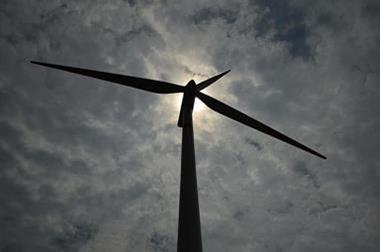With World Environment Day encouraging action for the protection of the environment, Adrian Pennington talks to tech companies about their sustainability plans

Sustainability in the broadcast sector has been rising steadily up the agenda for a few years, to the extent that environmental awareness appears engrained in the brand communications and actions of leading vendors.
To test the water and continue to highlight the issue on World Environment Day, I spoke to a range of vendors in the TV production and video streaming space to find out how their companies and the industry at large is handling the collective responsibility to tackle climate change.
What emerges is that the need to reduce the global carbon footprint is “one of the key priorities for the future of broadcasting,” according to Remi Beaudouin, Chief Strategy Officer EMEA at Ateme.
The broadcast industry “has undergone a significant shift,” reports Neil Maycock, CMO at Pebble, “in recognising the imperative of minimising its environmental impact and embracing sustainable practices.”
We’re witnessing “an unprecedented rise” in the importance of sustainability, according to Michael Pfitzner, VP, Newsroom Solutions, CGI.
Sustainability has emerged as a central focus on companies’ roadmap, he says, “fuelled by public and investor sentiment, and driven by the visible impact of climate change.”
Kit developers are actively taking measures to reduce their internal carbon footprint (the Scope 1 emissions defined by Greenhouse Gas Protocol) by minimising waste and promoting sustainability.
As an example, Pebble monitors its operations and adopts practices that include reusing and recycling, reducing water and power consumption, and sourcing materials from renewable resources.
“Although accolades such as the DPP Committed to Sustainability Mark serve as notable milestones, the commitment to sustainability must extend beyond awards,” Maycock says. “Companies need to integrate sustainable procedures into their business models and inspire industry stakeholders to follow suit.”
MRMC, which makes camera motion control robotics and systems, has implemented solar panels at its office and is returning unused renewable energy to the grid.
Dan Brooks, head of marketing and PR at the firm, says another important step is having agreements and guidelines in place for both contractors and employees. “We have these in place with our contractors, to make sure that we recycle items such as batteries, wooden pallets and electrical items and that all electrical waste is disposed of in accordance with WEEE requirements. Eco-guidelines are also issued to all employees detailing what can be recycled from our daily activities.”
While evidence of greenwashing must be called out, Ateme can justifiably claim to have acted decisively. In 2021 the French developer joined forces with several other companies to establish Greening of Streaming, a collaborative platform aimed at sharing and implementing best practices for reducing the energy consumption for distributing data (most of which is video) over the internet.
Beaudouin points to more efficient codecs which can reduce bandwidth and storage requirements. “Additionally, the power of cloud computing enables the utilisation of shared resources and efficient peak offloading,” he says. “Let’s not forget the transformative potential presented by the advent of 5G networks, unlocking new opportunities for sustainable streaming.”
Fellow codec developers, co-members of Greening of Streaming and chair of compression working group WG6, V-Nova are actively engaged with this issue.
“WG6 plays a crucial role in shaping the recommendations of the Low Energy Sustainable Streaming (LESS) Accord,” explains Fabio Murra, SVP Product & Marketing. “This initiative aims to guide services in reducing end-to-end energy consumption through the right technology choices, paving the way for a more sustainable future.”
He reports that broadcasters are increasingly engaged in discussing energy savings achievable by optimising their video workflows.
“At V-Nova, we are committed to better understand and quantify the impact of these technologies and continue refining them to drive us towards a more sustainable future for video delivery.”
Virtual Production reduces the need to travel
Virtual Production is among the fastest adopted suite of technologies for film and TV including live broadcast, not least because of the carbon waste it can save.
“Virtual Production eliminates the requirement for location scouting travel, saving time, resources, and reducing carbon emissions,” says Addy Ghani, VP Virtual Production for disguise. “By creating virtual environments, production teams can explore and capture diverse settings without physically visiting multiple locations.”
Additionally, by confining recording to a single, manageable set, the industry can streamline production and further decrease the carbon footprint associated with accommodating and transporting large crews.
Ghani adds, “By adopting Virtual Production workflows, the broadcast sector can make significant progress in minimising its ecological impact. This will allow productions to meet their sustainability goals whilst maintaining creative excellence.”
Media captured from Volume stages (or any physical stage) can also be tethered to servers in data centres enabling further production efficiencies and reducing the need for editorial and VFX teams and other creative heads of department to be on site.
Going cloud-native
“The implementation of cloud-based production workflows can have a range of benefits including a reduction in necessary infrastructure, studio space, shipping costs as well as team size whilst retaining effective remote working and global collaboration,” explains Mike Ward, Head of Marketing at Singular.live. “Cloud native solutions are a vital step in driving more sustainable working practices – allowing end users with a cost effective and environmentally conscious production solution – without compromising on quality.”
Monitor-recorder manufacturer Atomos is part of this trend, having recently extended the capabilities of its products to enable camera to cloud workflows.
“Camera to cloud is one of the fastest-growing technologies in video production today, and potentially one of the most environmentally friendly,” says CEO Trevor Elbourne. “Not only is there a productivity gain – it massively speeds up the content creation process by reducing the time between acquisition and post – but because cloud production reduces the need for physical transportation of equipment, crew and talent, there’s a sustainability upside too.”
Even as one target for reducing e-waste is reached – an albert certificate for example – no producer, broadcaster or solutions provider should be resting on their laurels. There will always be a need to drive down carbon emissions. The good news is that the effort can be achieved hand in hand with tech innovation. It’s no coincidence perhaps that the ability for the broadcast industry to pivot and make fairly rapid gains in reducing carbon is a result of macro technology transitions to using software over hardware and cloud over bespoke facilities.
“With the rise of streaming models and IP-based workflows, the broadcast industry is going through a significant transformation,” notes Pfitzner. “This presents a crucial opportunity to develop sustainable practices that go beyond the previous SDI era. However, ensuring true effectiveness requires a holistic approach in shaping a sustainable future for the industry.”
Through innovation, partnerships, and environmental responsibility, the broadcast industry is driving positive change but it remains imperative that this initiative does not slack and is kept at the foreground of everyone’s decision making.

Adrian Pennington is a freelance journalist specialising in future media technology.








No comments yet